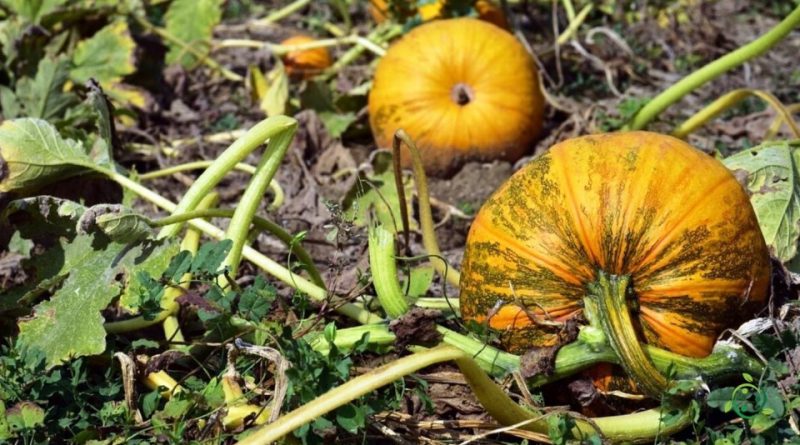How to intercrop pumpkin
How to intercrop pumpkin
Pumpkins are plants grown as vegetables; these plants belong above all to the Cucurbitaceae family (Cucurbita maxima, Cucurbita pepo and Cucurbita moschata).
The pumpkin harvest period, in the Mediterranean area, runs approximately from September to the end of November.
These vegetables can be combined with other vegetable plants, taking care however to consider the necessary space that their fruits reach when ripe.
Furthermore, for the cultivation of pumpkins you need to have rich soil to have excellent results from sowing, with a pH between 6 and 7 to have an optimal base. Another fundamental characteristic is that the pumpkin plant is extremely demanding in terms of fertilization.
Pumpkins in intercropping, especially with legumes, exploit the latter’s ability to fix atmospheric nitrogen very well.
Among the plants that can be planted near pumpkins to promote healthy growth and reduce parasites, we mention a few:
– Corn: Pumpkins can climb corn plants, using the corn as support. Additionally, corn leaves provide shade and moisture to the soil, which is beneficial for pumpkins.
– Beans: Climbing beans can provide support for pumpkins, as well as fix nitrogen in the soil, improving its fertility.
– Salad: Salad plants can help shade the soil around pumpkins, keeping it cool and moist.
– Mint: Mint can repel some insects that are harmful to pumpkins.
– Onions and garlic: Can help repel pumpkin pests.
– Parsley: They can attract natural predators of insects harmful to pumpkins.
– Tomato plant: Although not traditionally considered companion plants with pumpkins, pumpkins can be planted near tomatoes as their leaves provide shade and moisture.
Also remember to avoid planting pumpkins near other pumpkins, as they can compete for resources such as water and nutrients. Additionally, rotating crops each year can help prevent disease and insect infestations.
Le zucche sono delle piante coltivate come ortaggi; queste piante appartengono soprattutto alla famiglia delle Cucurbitaceae (Cucurbita maxima, Cucurbita pepo e Cucurbita moschata).
Il periodo di raccolta della zucca, nell’area del mediterraneo, va orientativamente da settembre a tutto novembre.
Questi ortaggi possono essere consociati con altre piante da orto, avendo cura però di considerare lo spazio necessario che i loro frutti raggiungono a maturità.
Inoltre per la coltivazione della zucca bisogna avere un terreno ricco per avere risultati eccellenti dalla semina, con un pH compreso tra 6 e 7 per avere una base ottimale. Altra caratteristica fondamentale è quella che la pianta di zucca è estremamente esigente sotto il profilo della concimazione.
Le zucche in consociazione, soprattutto con leguminose, sfruttano molto bene la capacità di queste ultime di fissare l’azoto atmosferico.
Tra le piante che si possono piantare vicino alle zucche per favorire una crescita sana e ridurre i parassiti ne citiamo alcune:
– Mais: Le zucche possono arrampicarsi sulle piante di mais, utilizzando il mais come supporto. Inoltre, le foglie di mais forniscono ombra e umidità al suolo, benefiche per le zucche.
– Fagioli: I fagioli a crescita rampicante possono fornire supporto per le zucche, oltre a fissare l’azoto nel terreno, migliorando la sua fertilità.
– Insalata: Le piante di insalata possono aiutare a ombreggiare il terreno intorno alle zucche, mantenendolo fresco e umido.
– Menta: La menta può respingere alcuni insetti dannosi per le zucche.
– Cipolle e aglio: Possono aiutare a respingere i parassiti delle zucche.
– Prezzemolo: Possono attirare predatori naturali di insetti dannosi per le zucche.
– Pianta di pomodoro: Anche se tradizionalmente non sono considerate piante da consociare con le zucche, le zucche possono essere piantate vicino ai pomodori poiché le loro foglie forniscono ombra e umidità.
Inoltre si ricorda di evitare di piantare zucche vicino ad altre zucche, poiché possono competere per risorse come acqua e nutrienti. Inoltre, ruotare le colture ogni anno può aiutare a prevenire malattie e infestazioni di insetti.

